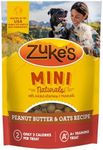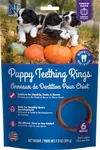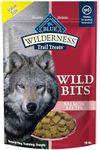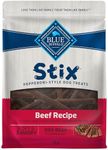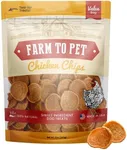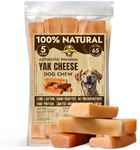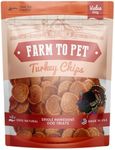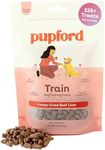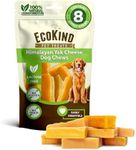Buying Guide for the Best Training Treats For Puppies
Choosing the right training treats for your puppy is essential for effective training and ensuring your puppy's health and happiness. Training treats are used to reward your puppy for good behavior and to reinforce positive actions. When selecting training treats, it's important to consider several key factors to ensure you pick the best option for your furry friend. Here are the key specifications to look out for and how to navigate them.IngredientsIngredients are the components that make up the treat. This spec is important because it directly affects your puppy's health and well-being. Look for treats with natural, high-quality ingredients and avoid those with artificial additives, preservatives, and fillers. Treats with wholesome ingredients like real meat, vegetables, and fruits are ideal. If your puppy has any allergies or dietary restrictions, make sure to choose treats that cater to those needs. For example, grain-free treats are suitable for puppies with grain allergies.
Size and TextureThe size and texture of the treat are crucial for ensuring that your puppy can easily chew and digest the treat. Small, soft treats are generally best for puppies, as they are easier to chew and less likely to cause choking. Soft treats are also more palatable and can be quickly consumed, which is important during training sessions to maintain your puppy's focus. If your puppy is teething, softer treats can be more comfortable for them to chew.
Calorie ContentCalorie content refers to the number of calories in each treat. This spec is important because it helps you manage your puppy's overall calorie intake and prevent overfeeding, which can lead to obesity. Training treats should be low in calories since you will be giving them frequently during training sessions. Look for treats that are around 1-5 calories each. This way, you can reward your puppy often without worrying about excessive calorie intake.
FlavorFlavor is the taste of the treat, and it is important because it determines how appealing the treat is to your puppy. Puppies have different preferences, so you may need to try a few different flavors to see which one your puppy likes best. Common flavors include chicken, beef, lamb, and peanut butter. Choose a flavor that your puppy finds irresistible to keep them motivated during training sessions.
Nutritional ValueNutritional value refers to the vitamins, minerals, and other nutrients present in the treat. This spec is important because it ensures that the treats contribute to your puppy's overall health. Look for treats that provide additional nutritional benefits, such as added vitamins, minerals, and omega fatty acids. These can support your puppy's growth, development, and overall well-being. Avoid treats that are high in sugar or unhealthy fats.
PackagingPackaging refers to how the treats are stored and presented. This spec is important for convenience and maintaining the freshness of the treats. Look for resealable packaging to keep the treats fresh and prevent them from becoming stale. Additionally, consider the size of the packaging based on how often you train your puppy. Smaller packages may be more convenient for frequent training sessions, while larger packages can be more economical if you train your puppy regularly.

